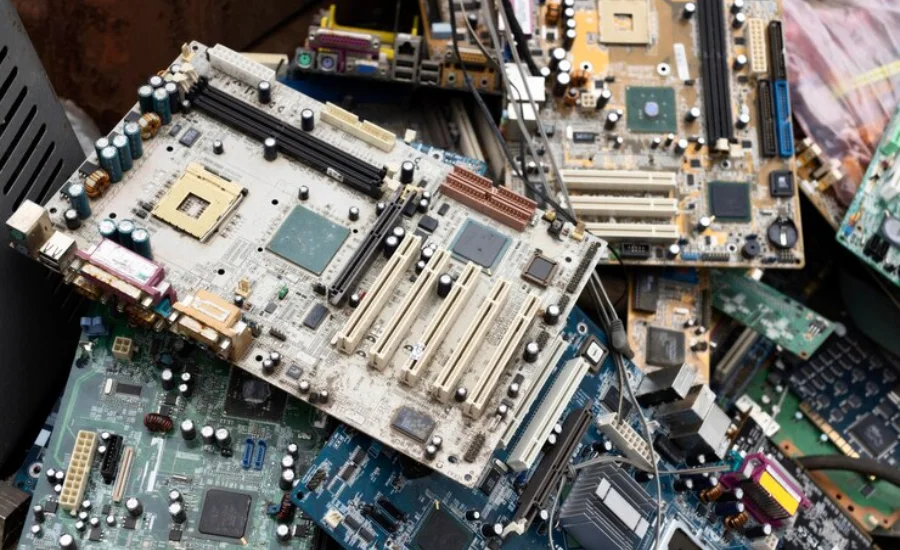UPC: 37431881809 Parts, In today’s fast-paced business environment, efficiency, accuracy, and streamlined operations are essential for success. As companies manage complex global supply chains, there is a growing demand for advanced systems that can effectively handle inventory, track parts, and facilitate seamless transactions. The introduction of the Universal Product Code (UPC) system has fundamentally transformed how goods are identified, tracked, and managed across various industries.
UPC: 37431881809 Parts exemplifies the profound influence that a single code can have on parts identification and inventory control. By enabling precise tracking and management, this UPC code plays a crucial role in optimizing inventory processes, enhancing accuracy, and improving overall operational efficiency.
This article explores the significant benefits of UPC 37431881809, examining how it has reshaped parts identification and inventory management. It also highlights the broader implications for businesses that rely on accurate and efficient inventory systems. Through a detailed analysis, we uncover the transformative effects of this UPC code and its pivotal role in modern inventory management practices.
Understanding the Structure and Function of UPC 37431881809
UPC 37431881809 is a distinctive identifier used to encode specific details about a product or part. This 12-digit numeric code is structured according to a standardized format. The initial six digits of the UPC denote the manufacturer’s identification number, which is issued by the Uniform Code Council (UCC). The subsequent five digits represent the unique item number assigned by the manufacturer to each product. The final digit serves as a check digit, calculated from the preceding digits to verify the code’s accuracy during scanning.
Designed for machine readability, UPC 37431881809 is typically printed as a barcode on the product or its packaging. A barcode reader scans this code, converting it into a digital format that can be processed by a computer system. This allows for the swift retrieval of essential product information, including its name, price, and description. The streamlined and efficient nature of UPCs has cemented their role as a critical tool in contemporary inventory management and parts identification.
The Evolution of Parts Identification: From Manual Records to UPC Barcodes

Efficient parts identification has long been a cornerstone of commerce. Historically, merchants relied on manual record-keeping methods, such as handwritten ledgers and labels, to track their inventory. While these methods were functional, they were often susceptible to errors and inefficiencies. As industries expanded and global trade grew in the 19th and 20th centuries, the challenges of inventory management intensified. The increasing volume of goods produced, shipped, and sold highlighted the need for a more systematic approach to tracking and managing inventory.
The 1970s saw a transformative advancement with the introduction of barcodes, notably the Universal Product Code (UPC). Developed by George J. Laurer, the UPC was one of the first widely adopted barcode systems, providing a standardized method for encoding product information. This innovation revolutionized the retail and manufacturing sectors by facilitating rapid and accurate scanning. The UPC system significantly enhanced checkout efficiency, minimized human errors, and improved inventory management practices.
Since its inception, the UPC system has evolved, incorporating more advanced technology and expanding its applications across various industries. This progression has further streamlined parts identification and inventory control, reinforcing the system’s critical role in modern commerce.
Broader Implications of UPC: 37431881809 Parts in Business Operations
The benefits of UPC 37431881809 extend well beyond basic parts identification and inventory management, impacting various aspects of business operations. This unique code not only streamlines internal processes but also contributes to broader improvements in efficiency, cost management, and customer satisfaction.
UPC 37431881809 significantly boosts operational efficiency by automating key tasks related to parts identification and inventory control. This automation reduces the time and effort needed to manage inventory, allowing staff to concentrate on more strategic activities, such as enhancing customer service or innovating new products. The result is faster response times to customer orders and market changes, which enhances overall operational agility.
Implementing UPC 37431881809 facilitates notable cost reductions in multiple areas. Accurate inventory tracking helps avoid the expenses associated with excess stock, such as high storage costs and the risk of inventory obsolescence. Additionally, automating inventory management minimizes labor costs related to manual processes. The precision of UPC 37431881809 also decreases the chance of costly errors in parts identification, such as incorrect shipments or returns, further lowering operational costs.
Effective inventory management directly influences customer satisfaction, and UPC 37431881809 plays a crucial role in this regard. By providing real-time, accurate inventory information, the UPC system helps prevent stockouts and ensures that products are available when customers need them. This capability not only improves the customer experience by meeting their expectations consistently but also fosters customer loyalty, as businesses that reliably fulfill orders are more likely to retain their customer base.
In summary, UPC: 37431881809 Parts proves to be a transformative tool in business operations, delivering substantial benefits across efficiency, cost management, and customer satisfaction.
Challenges of UPC 37431881809 in Inventory Management

Despite the considerable advantages offered by UPC 37431881809, businesses face several challenges when integrating this system into their operations. Addressing these challenges effectively is crucial for maximizing the benefits of UPC technology.
A major hurdle in adopting UPC 37431881809 is integrating it with current inventory management and point-of-sale systems. For businesses operating with outdated technology, this integration can be particularly complex. Legacy systems may not fully support modern UPC functionality, necessitating upgrades or new software solutions. Investing in compatible systems or enhancing existing infrastructure is essential for a seamless transition.
The shift to using UPC 37431881809 involves significant changes to business processes, which can encounter resistance from employees. Successful implementation requires comprehensive training programs to educate staff on the system’s benefits and operations. Additionally, effective change management strategies are necessary to address concerns, gain employee buy-in, and ensure a smooth transition to the new system.
Although UPC 37431881809 can lead to long-term cost savings, the initial investment for implementation can be substantial. Costs include purchasing barcode scanners, upgrading software, and training staff. Businesses need to carefully evaluate these upfront costs against the potential benefits, such as increased efficiency and reduced errors, which can result in significant savings over time.
Implementing UPC 37431881809 raises important data security and privacy concerns. Ensuring that collected data is securely stored and protected from unauthorized access is vital for maintaining customer trust and meeting regulatory standards. Robust security measures, including encryption and access controls, must be put in place to safeguard sensitive information.
The Role of UPC 37431881809 in Enhancing Inventory Control
Managing inventory effectively is a critical challenge for businesses, especially those handling extensive inventories of parts and products. Poor inventory management can lead to issues such as stockouts, overstocking, and missed sales opportunities, all of which can adversely affect a company’s financial performance. UPC: 37431881809 Parts has proven to be a valuable asset in overcoming these challenges by offering a structured and reliable approach to inventory control.
One of the primary advantages of UPC 37431881809 in inventory management is its ability to automate tracking processes. When a product marked with UPC 37431881809 is scanned at checkout or during inventory audits, the system automatically updates inventory records. This real-time data synchronization ensures that stock levels are accurately reflected, reducing the chances of discrepancies and helping businesses keep their inventory well-organized. This efficiency in updating inventory information supports better stock management, ensuring that products are readily available and helping to prevent issues related to inventory mismanagement.
Optimizing Inventory Management with UPC 37431881809
UPC 37431881809 significantly enhances inventory management by streamlining the reordering process. When integrated with inventory management systems, this unique code facilitates automated replenishment. Companies can set predefined stock thresholds, and when inventory levels fall below these limits, the system generates automatic purchase orders. This feature ensures that stock levels are consistently maintained and minimizes the risk of stockouts, which can otherwise disrupt operations and result in lost sales.
Moreover, JIT management and other sophisticated inventory control techniques are supported by UPC 37431881809. JIT orders products and parts only when they are required, with the goal of maintaining minimal inventory levels. This strategy lowers the risk of obsolescence and the expenses related to excess inventory. UPC 37431881809 facilitates businesses in implementing Just-In-Time (JIT) strategies by offering accurate and up-to-date data on inventory levels. This leads to effective inventory management and cost savings.
The Impact of UPC: 37431881809 Parts Identification Across Industries

UPC: 37431881809 Parts has revolutionized parts identification, especially in sectors where precision and accuracy are crucial. In the automotive industry, where thousands of components need to be tracked and matched accurately, UPC 37431881809 plays a vital role. This standardized code ensures that each part is easily identifiable, minimizing the risk of errors, such as installing incorrect components, which could have severe safety consequences.
In the electronics industry, where parts are numerous and diverse, UPC 37431881809 also helps with better inventory control. Manufacturers and retailers can track parts from production through retail by giving each one a unique UPC. This degree of control makes sure that parts are always available when needed and helps to maintain accurate inventory levels, both of which are crucial for meeting production deadlines and preserving profitability.
Moreover, UPC 37431881809 extends its benefits beyond automotive and electronics, impacting industries such as healthcare and aerospace. The universal application of the UPC system provides a consistent and reliable method for parts identification and management across various fields, supporting precision and efficiency in critical operations.
Looking Ahead: The Future of UPC: 37431881809 Parts
The evolution of UPC 37431881809 in inventory management is likely to be influenced by advancements in technology and shifting business needs. Future developments may include the integration of UPC systems with Internet of Things (IoT) devices, such as smart sensors and RFID tags. These technologies could offer real-time data on inventory location and condition, enhancing tracking accuracy and reducing manual efforts.
Artificial intelligence (AI) and machine learning (ML) are also expected to play a significant role in the future of inventory management. AI and ML can analyze data from UPC 37431881809 and other sources to identify patterns and trends, aiding in inventory forecasting and decision-making. For instance, AI-powered systems might predict stock shortages based on historical data, allowing for proactive reordering.
Sustainability is becoming increasingly important in business practices, and UPC 37431881809 could contribute to more sustainable operations. Tracking the lifecycle of products from production to disposal using UPCs may enable better recycling and reuse practices. Additionally, providing customers with information about the environmental impact of their purchases could enhance corporate responsibility and consumer trust.
In summary, while UPC: 37431881809 Parts offers significant benefits in inventory management, addressing integration challenges, investing in training, managing costs, and ensuring data security are critical for successful implementation. Looking forward, advancements in technology and sustainability concerns will shape the future applications and benefits of UPC systems.
Final Words
UPC: 37431881809 Parts, The UPC 37431881809 is a testament to the transformative power of standardized identification systems in modern business operations. By providing a unique and consistent method for tracking and managing parts, UPC 37431881809 has revolutionized inventory control across various industries, from automotive and electronics to healthcare and aerospace.
The benefits of implementing UPC 37431881809 are manifold, including enhanced efficiency, cost reductions, and improved customer satisfaction. Automated tracking and real-time updates streamline inventory management, reducing the risk of errors and ensuring that products are always available when needed. This not only boosts operational efficiency but also strengthens customer loyalty by delivering reliable service.
However, the integration of UPC 37431881809 into existing systems presents challenges, such as the need for compatibility with legacy technology, employee training, and initial cost considerations. Addressing these issues effectively is crucial for maximizing the system’s advantages.
For more information and updates join us on Incredible Wave

